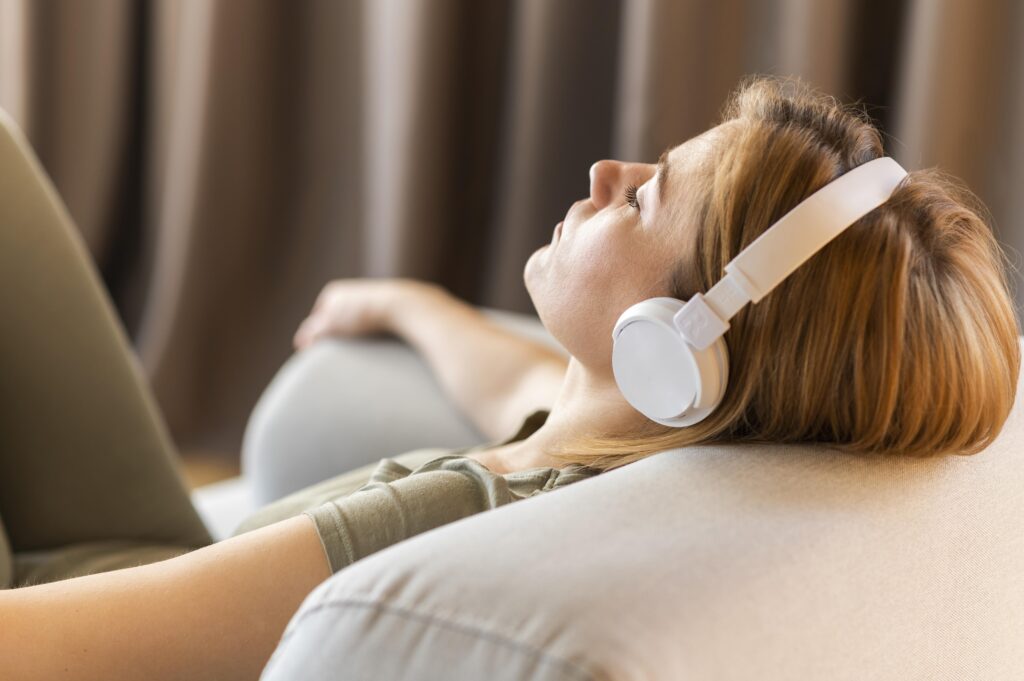Music Therapy for Mental Health?
YES! Now Doctors Are Prescribing It.

Everyone listens to music. It is a fundamental component of human culture, used for personal motivation, medical applications, focus enhancement, and mood regulation. People often say, “Music is a balm for the human soul.” While traditional music therapy involves specific techniques, the broader use of music as a therapeutic tool is now widely recognized, with doctors recommending it for various health conditions. Combined with biofeedback therapy, music can provide even greater benefits, helping individuals regulate their physiological and mental well-being.
1. Music Helps Control Blood Pressure and Heart Health
Listening to music with a repetitive rhythm for at least ten seconds has been shown to lower blood pressure and heart rate, according to the Cardiovascular Society of Great Britain. Certain classical compositions, when matched with the body’s rhythm, can be used therapeutically to maintain cardiovascular health. A study by Oxford University found that “listening to music with a repeated 10-second rhythm coincided with a drop in blood pressure, reducing the heart rate.”
Integrating Biofeedback:
Biofeedback technology enhances this effect by allowing individuals to monitor and adjust their physiological responses. By using biofeedback devices while listening to calming music, individuals can actively train their bodies to respond more effectively to relaxation cues, further improving cardiovascular function.
2. Music Therapy for Alzheimer's Disease
“When used appropriately, music can shift mood, manage stress-induced agitation, stimulate positive interactions, facilitate cognitive function, and coordinate motor movements,” according to studies conducted by the Alzheimer’s Foundation of America. Patients suffering from Alzheimer’s disease benefit greatly from music therapy, as music enhances emotional connections and triggers memory recall.
Biofeedback Application:
Biofeedback can support Alzheimer’s patients by helping regulate stress responses and improving cognitive resilience. Combining music therapy and biofeedback can lead to improved relaxation, enhanced memory recall, and better emotional stability in those with neurodegenerative diseases.
3. Studying Music Enhances Academic Performance
Early exposure to music improves brain plasticity, strengthening cognitive abilities and boosting learning potential. “UCLA professor James S. Catterall analyzed the academic achievement of 6,500 low-income students and found that by the 10th grade, 41.4% of those who had taken arts courses scored in the top half on standardized tests, compared to only 25% of those with minimal arts experience.” Music education enhances reading skills, increases focus, and even reduces screen time, leading to better academic outcomes.
Biofeedback for Focus:
Students can use biofeedback training to improve concentration, manage anxiety, and optimize their cognitive performance. When combined with music therapy, biofeedback helps train the brain to stay in an optimal state for learning, maximizing memory retention and focus.
4. Music Improves Sleep Quality
According to the Center for Cardiovascular Disease in China, listening to music before and during sleep significantly helps people suffering from chronic sleep disorders. This music-assisted relaxation is used to treat stress-related insomnia and other sleep disturbances.
The Role of Biofeedback:
Biofeedback therapy can help individuals track their heart rate variability (HRV) and breathing patterns, guiding them toward a deeper state of relaxation. Using biofeedback devices in conjunction with music therapy offers a more structured approach to improving sleep quality, reducing nighttime stress, and achieving restorative rest.
5. Music and Biofeedback for Stress and Depression Relief
Music is widely recognized as a natural remedy for stress and depression. Research from McGill University in Canada found that listening to music stimulates dopamine production, a neurotransmitter associated with pleasure and mood regulation.
Playing music also has profound effects. The NAMM Foundation reported that playing instruments reduces stress at both an emotional and molecular level. Studies show that musicians produce higher levels of Human Growth Hormone (HgH), which plays a crucial role in body composition, metabolism, muscle growth, and even heart function.
The Power of Biofeedback:
By combining biofeedback techniques with music therapy, individuals can train their nervous system to better manage stress and anxiety. Biofeedback devices provide real-time data on physiological responses, allowing users to adjust their breathing, heart rate, and muscle tension while listening to therapeutic music.
Personalized Sound Therapy – CyberMagnetic Chair
Using sound and music to improve well-being is not just a concept—it is now a practical solution. Our CyberMagnetic Chair generates personalized relaxation music, creating a tailored musical therapy experience. This innovative device can be used for:
- Stress reduction
- Cognitive enhancement
- Muscle therapy
- Deep relaxation
By combining biofeedback technology with music therapy, the CyberMagnetic Chair allows users to regulate their physiological state, achieving deeper relaxation and improved overall well-being.
Final Thoughts
Music therapy is an increasingly recognized tool for mental and physical health. When combined with biofeedback therapy, its benefits are amplified, allowing individuals to take an active role in their health. Whether managing stress, improving sleep, or enhancing focus, the synergy between music and biofeedback offers a holistic approach to well-being.
Discover the power of music-assisted biofeedback and transform your mental and physical health today!
Download our App!